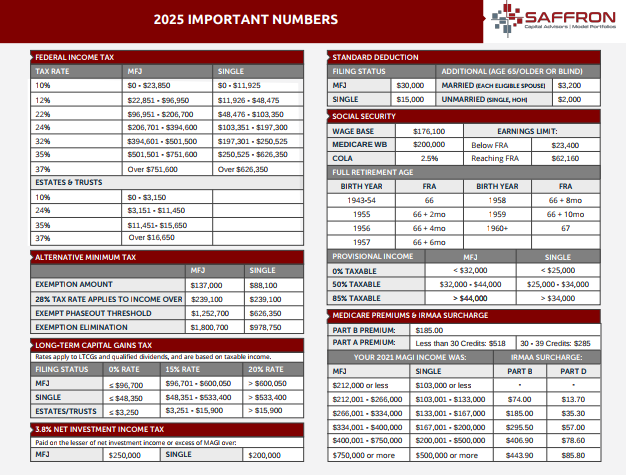
July 2023 Returns and Asset Performance
August 2, 2023
New Law Impacts the 401k Catch-Up Rule
August 28, 2023How to Make a
Qualified Charitable Distribution from an IRA
Introduction
A qualified charitable distribution (QDC) is an allocation from an individual retirement account (IRA) to a qualifying charity. The guidelines for doing a QDC are contained in Internal Revenue Code Section 408(d)(8) as created under section 1201 of the Pension Protection Act of 2006.
Why?
QCD’s are pursued for several reasons:
- to enable charitable giving and social impact investing
- to avoid taxes on IRA distributions, and
- to offset IRA required minimum distributions (RMDs).
When?
Under QDC rules, the owner of the IRA must be at least 72 years old or older on the date of the distribution. The age requirement was recently increased from 70.5 to 72 for those who turn 72 on or before December 31, 2022. A beneficiary of an inherited IRA is also eligible to make a QDC, as long as the IRA beneficiary is also at least 72 years old on the donation date.
How?
Executing a charity distribution is simple in practice as long as the basic the eligibility rules are applied. For example,
- The maximum dollar amount of the QDC for an individual from his/her IRAs is limited to $100,000 per year. The limit applies “per taxpayer”, regardless of how many IRAs are used to fund the distribution. As of 2023, the contribution limit is now indexed to inflation.
- The IRA must be a traditional IRA, a rollover IRA, or an inherited IRA. SEP or SIMPLE IRAs are excluded if they are still receiving ongoing employer contributions. A Roth IRA is also eligible. However, since distributions on Roth accounts are not taxable, QDC rules are not relevant.
- Submit a distribution form to the IRA custodian and request that the check is made payable directly to the eligible charity.
- Be sure to request no tax withholding on the IRA distribution as no taxes are due if the money goes to the charity.
- Send the check directly to the charity (or to the IRA owner to be forwarded to the charity).
- The ‘public charity’ must be qualified under IRC Section 170(b)(1)(A). The QDC cannot go to a ‘private foundation,’ a ‘charitable supporting organization,’ or to a ‘donor-advised fund’ as specified in the tax code.
- The QDC must be eligible for a deduction, which implies that the donor does not receive a kick-back or any form of quid pro quo in exchange for the donation. Traditionally, this would have meant that a QDC recipient may not be a ‘split-interest charitable trust.’ However, beginning in 2023, a QDC may be taken to fund a Charitable Remainder UniTrust, a Charitable Remainder Annuity Trust, or a Charitable Gift Annuity up to a maximum of $50,000. The lower limit for trusts is also indexed to inflation.
These instructions are straightforward. However, it helps to coordinate the execution with your tax and investment advisor.
Manage End-of-Year Deadlines with Care
Next, it is essential that the charity cash the QDC check prior to December 31. Check clearing prior to year-end will ensures favorable tax treatment in the current tax year. Deadline compliance will also ensure a new contribution limit does not apply. Finally, timely handling will achieve the RMD offset in the current year.
In practice, the execution process must start before December. IRA custodians will insist the check is mailed to the IRA owner first (who must then forward it on to the charity). Unfortunately, to get the check payable to and sent directly to the charity may require a Medallion guarantee (similar to, but more stringent than, getting a signature notarized). The medallion guarantee then needs to be mailed to the IRA custodian before the check is released and that can create additional delays.
It is important to stress that mailing the check or ensuring the charity receives the check by December 31 is insufficient proof of compliance. The check must be cashed by year-end.
Benefits of Doing a QDC from an IRA
The benefits of doing a QCD from an IRA is that the distribution does not create tax consequences that would otherwise apply to an IRA withdrawal. Specifically, the distribution is excluded from income altogether. Moreover, there is no charitable deduction for making the QCD contribution to the charity. By definition, the QDC it was already pre-tax having come directly from a pre-tax IRA.
In addition, the QCD will satisfy RMD requirements, even though the QCD is not taxable, as shown below:
Example: Jack Flash is 75 years old and has an IRA with an account balance of $175,000. His RMD for the current year $7,113.82. If Jack does a $5,000 QCD to his his charity of choice, it will satisfy $7,000 of his RMD obligation (without any tax liability), leaving him with only $113.82 to distribute and report as income for tax purposes.
In summary, the QDC reduces taxable income, fulfill your IRA RMD requirements, and allows you to control how your tax dollars would otherwise be applied to benefit society.
Have questions or concerns about your IRA is being manged? We’d love to hear from you. You can contact us here.




